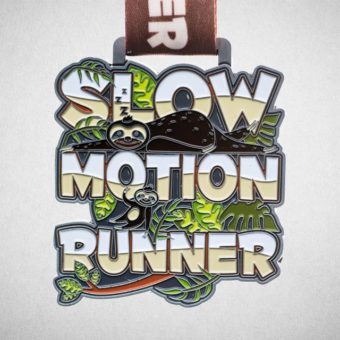This month sees the return of Virtual Runner’s popular Sloth Challenge.
With no minimum distance or time requirements, entrants simply log how far they can run, walk or cycle in one go.
It’s the perfect challenge for anyone who’s worried about hitting pre-determined targets and simply wants to take it steady, but it’s also a great one if you’re a seasoned runner wanting to build some longer, slower running into your training schedule.
We’ve all heard the old saying “slow and steady wins the race” and it’s true, there really are many benefits to slowing things down.
Here, we take a look at a few of them:
You can ditch the comparison-itis: One of the great things about running is the freedom and the headspace it brings but if you’re constantly worried about timings or how you compare to other people that sense of calm can be lost. Knowing that you are deliberately slowing things down and speed is not important instantly relieves some of that pressure and allows you to simply enjoy being in the moment.
You’ll be less likely to give up: If you’re new to running the temptation can be to run at a much faster speed than you actually need to, resulting in breathlessness, stitches and muscle cramps before you’ve even really got going. Slow things down, to the point where you’re barely doing much more than a fast walk if you need to, and you’ll soon realise you can achieve much more than you thought, making the prospect of your next run far less daunting.
It can help prevent injury: Running slowly prevents you from running too far, too fast and putting too much demand on your body. It helps you to gradually explore what you’re capable of rather than pushing too hard at the outset and ending up with injuries. It also helps your ligaments, tendons and bones adapt gradually to the stresses of running. Even the most experienced runners should be including longer, slower runs in their training schedules to give their bodies time to rest and repair.
It promotes efficient form: Slowing down gives you a chance to really pay attention to your form and think about your posture. Is your core engaged? Are you slumping your shoulders? Which part of your foot is hitting the ground first? Taking time to notice these things can help you make small changes which can have a big impact on the effectiveness of your running style.
It improves the function of your aerobic system: When you’re sprinting or running too fast you reach your aerobic threshold more quickly –the point at which the body can no longer create energy from oxygen alone. After this it has to switch over to the anaerobic energy system, which is where the production of lactic acid kicks in, resulting in more discomfort during and after runs. Running within your aerobic threshold for longer periods of time helps you gradually expand it, allowing you to run further and, eventually, faster, without the pain.
How do I know if I’m running slowly enough?
What exactly is slow and how do you define it? Clearly, this will differ for everyone, but there are a few good rules of thumb to help you know when you need to drop your pace.
Technically, on a slow run you should aim to be at no more than 60% to 70% of your maximum heart rate. If you don’t know what this is then the simplest indication of your suitable pace should be whether you could hold a conversation while running. If not, slow things down.
If you’re running alone, ask yourself ‘could I maintain this pace for an hour?’. Even if you’re not planning to actually run for that long, it’s a good test of whether you’re pushing too hard.
If you’d like to embrace your inner sloth, our Sloth Challenge runs from 1st -31st March. 20% of all profits will go to Radio Lollipop, which provides entertainment for children in hospital around the world. You can enter here.
